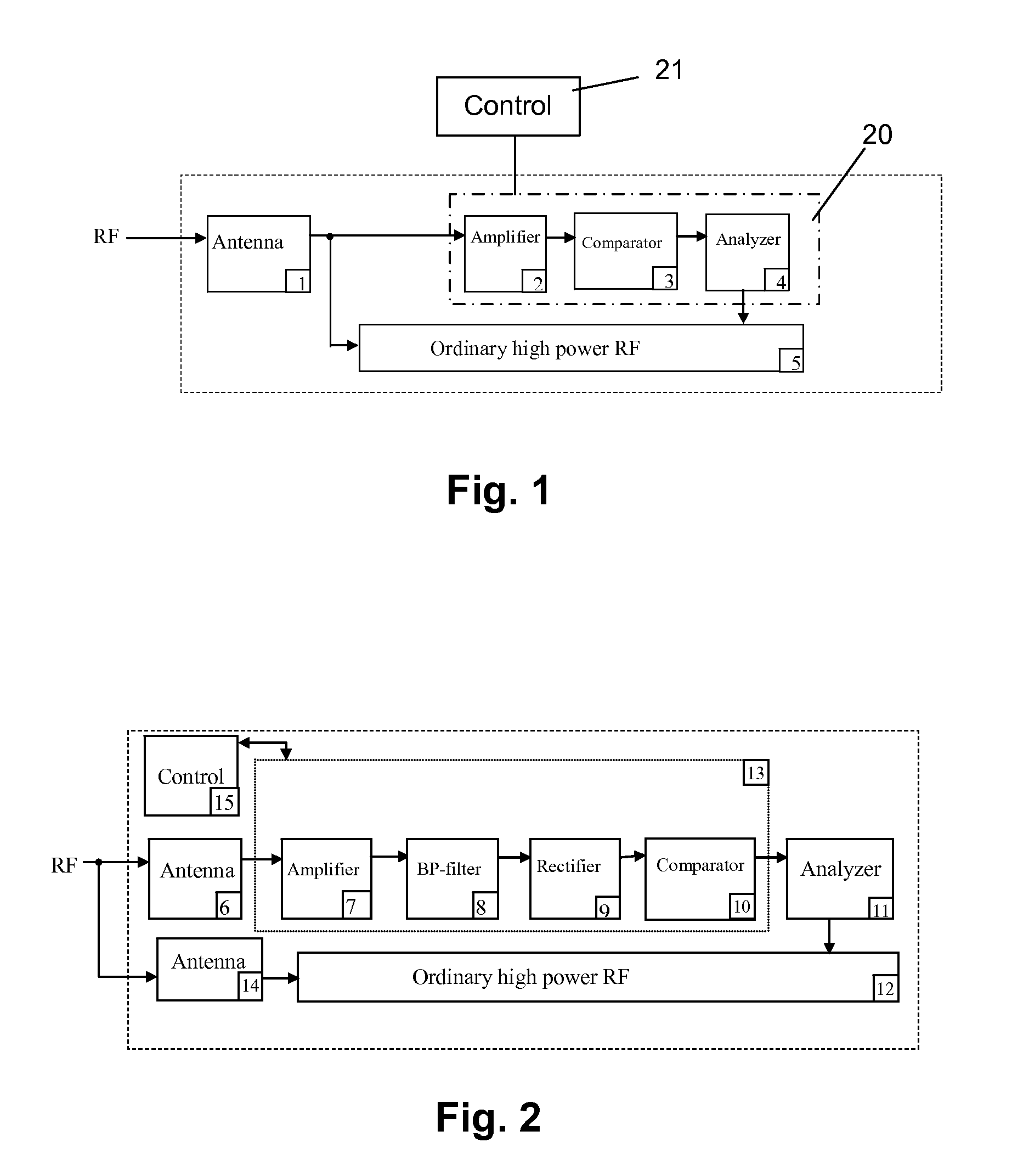Implantable RF telemetry devices with power saving mode
a technology of rf transceivers and implantable devices, applied in the field of saving power in implantable devices, can solve the problems of rf transceivers operating at 402-405 mhz, becoming a real challenge, and the battery capacity of implantable devices is very limited, and achieves the effect of simple architecture and very rapid turn on
- Summary
- Abstract
- Description
- Claims
- Application Information
AI Technical Summary
Benefits of technology
Problems solved by technology
Method used
Image
Examples
Embodiment Construction
[0017]Referring to FIG. 1, the simplified receiver comprises an antenna 1 receiving a wake-up signal (common with the MICS band antenna or separate), an amplifier 2 which amplifies the signal, and a comparator / detector 3 that detects the amplified signal if it is above a certain power level.
[0018]To further increase the security of the receiver against the device being woken up by noise, the wake-up signal comprises a predetermined coded pattern, which is analyzed in an analyzer 4 to see if it matches the wake-up pattern. Only if the pattern is correct the full transceiver 5 will be turned on by the analyzer 4. The amplifier 2, comparator 3 and analyzer 4 form part of a simple very low power receiver 20, which is periodically turned on during a sniff period to listen for an incoming radio frequency signal by a control unit 21.
[0019]FIG. 2 shows another embodiment where an RF signal is received by a tuned antenna 6 connected to an amplifier 7, an optional band pass filter 8, which in...
PUM
 Login to View More
Login to View More Abstract
Description
Claims
Application Information
 Login to View More
Login to View More - R&D
- Intellectual Property
- Life Sciences
- Materials
- Tech Scout
- Unparalleled Data Quality
- Higher Quality Content
- 60% Fewer Hallucinations
Browse by: Latest US Patents, China's latest patents, Technical Efficacy Thesaurus, Application Domain, Technology Topic, Popular Technical Reports.
© 2025 PatSnap. All rights reserved.Legal|Privacy policy|Modern Slavery Act Transparency Statement|Sitemap|About US| Contact US: help@patsnap.com


